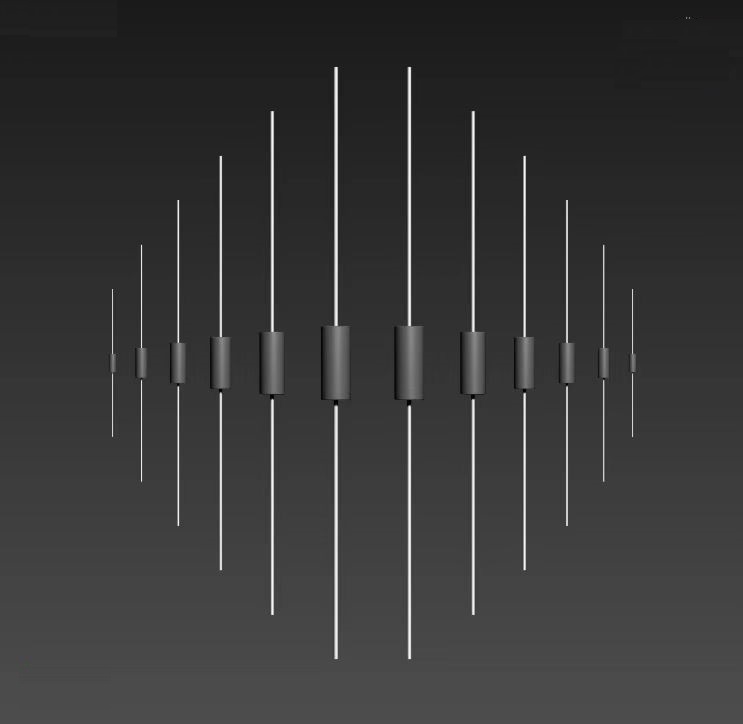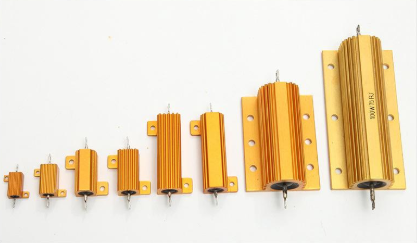Position:Home » Industry News
Different Materials and Processes Make Up Diverse Types of Resistors
Writer:Microhm Page View:Date:2019-07-31
Resistors are produced with a wide variety of materials and manufacturing processes. Each resistor material has its typical properties and specific areas of use. The main types that are used in electrical engineering comprise metal film, metal oxide film and foil carbon composition, carbon film and wirewound. Here is some details about wirewound resistors, metal film resistors and metal foil resistors.

Metal film resistors are usually made of Nichrome, but also other materials such as tantalum nitride is used. The resistive film is printed on a cylindrical or flat insulating substrate. The resistive material is a combination of a Ceramic material and a Metal, and therefore these resistors are also referred to as Cermet. Just as with carbon film, the resistance value is adjusted by cutting a spiral pattern in the film. This can be done with an abrasive or a laser. The stability, temperature coefficient and tolerance are better than for carbon film. Typical tolerances are between 0.5% and 2% with a temperature coefficient between 50 and 100 ppm/K. Stability is lower than for wirewound, but the high frequency properties are better. NLT Series, MPF series and EE series produced by Microhm Electronics are low TCR, tight tolerance metal film resistors.

The foil resistor was invented in the 1960’s and is still the most accurate and stable type today. The resistive element is a thin bulk metal foil that is cemented on a ceramic substrate. The foil thickness is several micrometers. Inherent to the mechanical design, they feature a very low temperature coefficient of resistance. They are used for applications with high precision requirements. Microhm MPR series, MVR2321-4, MVR3825-4 and MVR4618-4 are typical and popular metal foil resistors.

Wirewound Resistor are made by winding resistance wire in a spiral around a non-conductive core. The resistance wire is usually a nickel-chromium alloy and the core is often ceramic or fiberglass. A coating such as vitreous enamel is used for protection. The spiral winding has capacitive and inductive effects that makes it not suitable for applications higher than 50 kHz. Often other winding techniques are used to reduce the undesired high frequency effects. Wirewound resistors are essentially produced for high precision or for high power applications. They have low noise, are robust, and are temperature stable. Resistance values are available from 0.1 up to 100 kW, with accuracies between 0.001 and 20%. Nual series from Microhm are classic metal clad wirewound resistors.

Metal film resistors are usually made of Nichrome, but also other materials such as tantalum nitride is used. The resistive film is printed on a cylindrical or flat insulating substrate. The resistive material is a combination of a Ceramic material and a Metal, and therefore these resistors are also referred to as Cermet. Just as with carbon film, the resistance value is adjusted by cutting a spiral pattern in the film. This can be done with an abrasive or a laser. The stability, temperature coefficient and tolerance are better than for carbon film. Typical tolerances are between 0.5% and 2% with a temperature coefficient between 50 and 100 ppm/K. Stability is lower than for wirewound, but the high frequency properties are better. NLT Series, MPF series and EE series produced by Microhm Electronics are low TCR, tight tolerance metal film resistors.

The foil resistor was invented in the 1960’s and is still the most accurate and stable type today. The resistive element is a thin bulk metal foil that is cemented on a ceramic substrate. The foil thickness is several micrometers. Inherent to the mechanical design, they feature a very low temperature coefficient of resistance. They are used for applications with high precision requirements. Microhm MPR series, MVR2321-4, MVR3825-4 and MVR4618-4 are typical and popular metal foil resistors.

Wirewound Resistor are made by winding resistance wire in a spiral around a non-conductive core. The resistance wire is usually a nickel-chromium alloy and the core is often ceramic or fiberglass. A coating such as vitreous enamel is used for protection. The spiral winding has capacitive and inductive effects that makes it not suitable for applications higher than 50 kHz. Often other winding techniques are used to reduce the undesired high frequency effects. Wirewound resistors are essentially produced for high precision or for high power applications. They have low noise, are robust, and are temperature stable. Resistance values are available from 0.1 up to 100 kW, with accuracies between 0.001 and 20%. Nual series from Microhm are classic metal clad wirewound resistors.
Latest News
- Resistor's role in measuring and correcting LED,,,
- Single through-hole resistors' characteristics ,,,
- Why shunt resistors for current sense applicati,,,
- Metal-film resistors with small size, high resi,,,
- 36W High-Current Shunt Resistors MMS8420,,,
- 1W Surface Mount Resistor MPR1206,,,
- An Overview of Microhm Electronics' Resistor Pr,,,
- More anti-sulfur resistors used in harsh envir,,,
- Resistance changes with temperature,,,
- 140W TO247 High Power Heatsinkable Resistor,,,
- MMS5930 is ideal for current sensing in industr,,,
- Shunt resistors selection for engineers' design,,,
- Considerations for choosing precision resistors,,,
- Ceramic Encased Cement Resistors NWH Series for,,,
- Resistors for Passive Balancing in Battery-Pow,,,
Hot Articles
- Microhm will take part in 10th Automotive World,,,
- Thanks for Visiting Microhm's Booth E5-5706 in ,,,
- Resistors in Short Supply: Blame Cars,,,
- New lunch: High Power Precision Shunt Resistor,,,,
- How to Test a Resistor,,,
- Innovative Technology, Future Electric: Electri,,,
- What is Precision Resistors?,,,
- SMD Resistors Sizes and Packages,,,
- The Construction and Features of Metal Film Res,,,
- What is a TO-220 Resisor?,,,
- Hot Selling Products: Precision Shunt Resistors,,,
- How to Calculate the Equivalent Resistance Valu,,,
- What is a Fixed Resistor?,,,
- Resistors in LED Circuits,,,
- Resistors Types and Materials Overview,,,
Resistance applications
- The Main Application for High Precision and Low,,,
- Difference Between High Precision Resistors and,,,
- BMS for New Energy Vehicle,,,
- The Four Important Functions of Alloy Resistors,,,
- Surface Mount Resistor's Size and Package ,,,
- Precision Resistors' Construction and TCR,,,
- Why Zero-Ohm Resistors?,,,
- Urbanization Development Bringing the Transform,,,
- Carbon Film Resistors' Features and Application,,,
- Industrial Roberts Applied to Solar Photovoltai,,,
- The Measurement Accuracy of Automotive Shunt is,,,
- Select the Right Resistor for Harmonic Filterin,,,
- Miniature future for passive electronic compone,,,
- Heater Blower Motor Resistor in Air Conditioner,,,
- Shunt Resistor MMS8420 for High Current Stable ,,,
